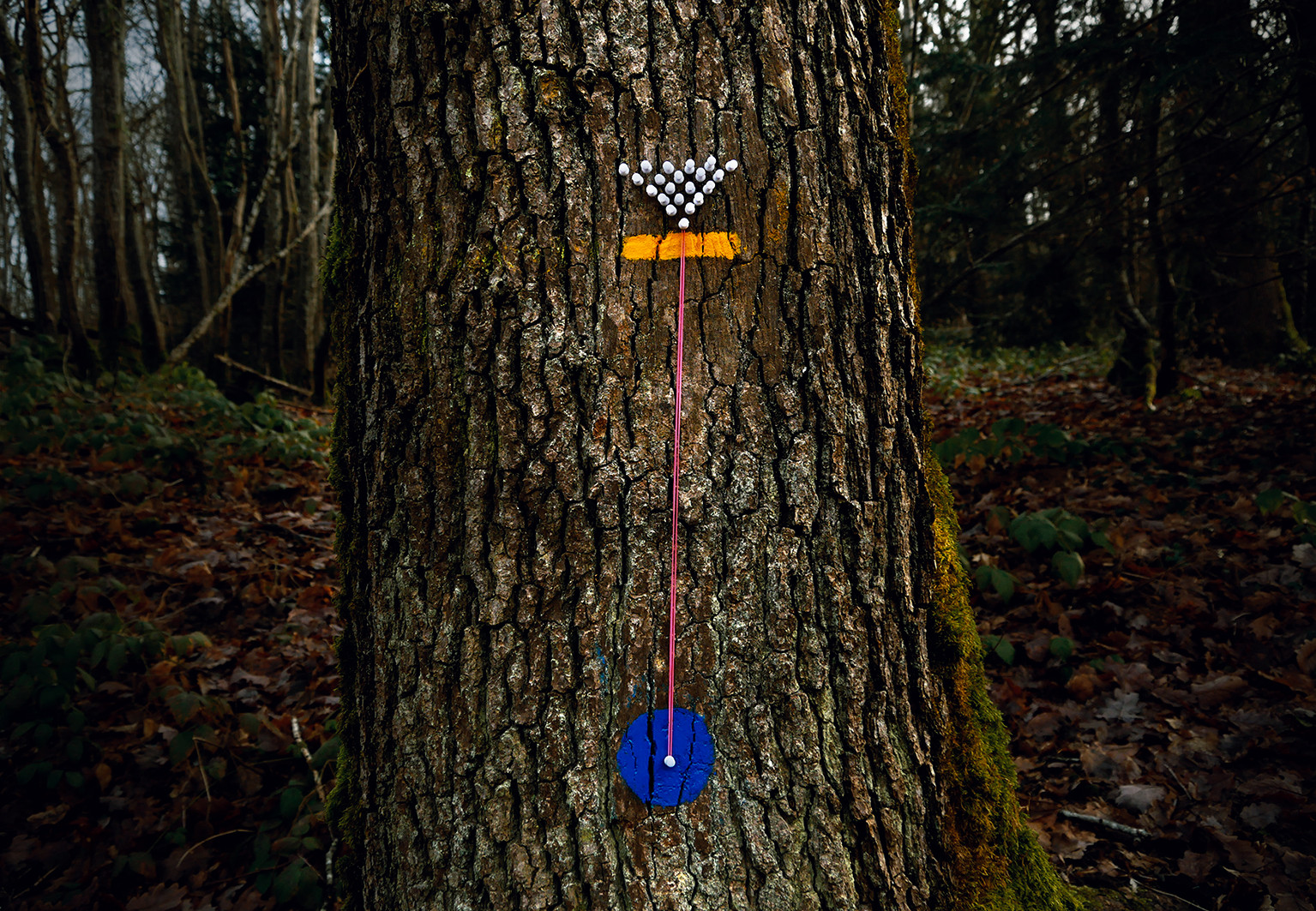ʒиN 9: Room for Translations

“It would be more beautiful to live in a symphony of languages than in some reduced universal monolingualism — neutral and standardized. There is one thing we can be sure of: a lingua franca […] is always apoetical.”
– Édouard Glissant, Poetics of Relation
Room for Translations
THERE, as the utmost unattainable, but desirable. Translation as a pretext, in reality as a series of efforts to move from one state via states of the Other to other now.
This ʒiN [self-published zine] began as a game between two people that led to this text in 11-point font within the confines of digital A4 format, which is simultaneously written by these two over the hour. We selected artists' finished works, which were interpreted [translated]. Then artists provided their reactions to this interpretation — {comment}. All this was finally translated together by those two into an international PDF interactive format and web-zine format. That is the final ʒiN. This last point indicates that artists' reactions to interpretations of their work <translations of translations> are wide-ranging, and their format was converted in some way into something that can be wrapped in PDF ʒiN. We promised to handle these multi-level translations and publicly present the result as a PDF ʒiN.
Multitudes are natural states of languages, natures, worlds, livings, deads, not yet borns. They even have natural aesthetic properties that could be described as beauties, but this already injects intentions that could not have been there in the original conditions of languages. Spontaneously precipitating aesthetics appeal should not be a barrier in the ways. Rather as interpretations in languages than direct translations into other [including national] languages. And since it is interpreted by two at once, the overall result will emerge in the crack between these polypositions. One of the fantastic outcomes of these joint efforts will be the definitions of these cracks as a possible space for the chance of revealing an opaque commonality that can be translated as "human" or as that what emerges between "human beings".
Ideas of translations, as intentions rather than tools, could guide us into the spaces between pluralities. Crucial distinctions are that the intentions of translations are not aimed to know or understand, they are aimed to mutual interchanges. Translations can be performed by anyone with such intentions. Key focuses are sharpening towards desires of Relations and putting it at the hearts of the motions. By translating in a head-to-heart movement, there could be senses of relief, which can be expressed by the words: trip off the tongues. Or: roll off the tongues. Per se. Selfintentions.
Interpretations are one of the species of translations. Actually, perceptions, allow oneself to focus on something. These focuses themselves are already motions of translations. Johncage’s "Listen to the noise and you will hear music" is the permission to sharpen oneself in the directions of sonic perceptions and at these moments are translations from "noises" to "musics", i.e., nothing happened and was not created, but translations took place. The acts of listening to other languages occurred. And this revealed the cracks.
Here may be built what could be translated to one into the other afterward. And in it, as the inhabitants of Three (poly)dimensionality enter the space of Flatland, those two human beings with some of their pieces are immersed in specially created spaces that have specific volumes and their own unique features, the pieces that remain outside will be able to convey what does not fit into the Procrustean bed of ordinariness-in-haste.
Altogether, these are rather dispensable words (it is worth saying that the whole importance of this textual indivi_dual works lies precisely in its very dispensability), directed by an attentive curiosities about mutual sharing and a critical sharpening to existing tools of togetherness.
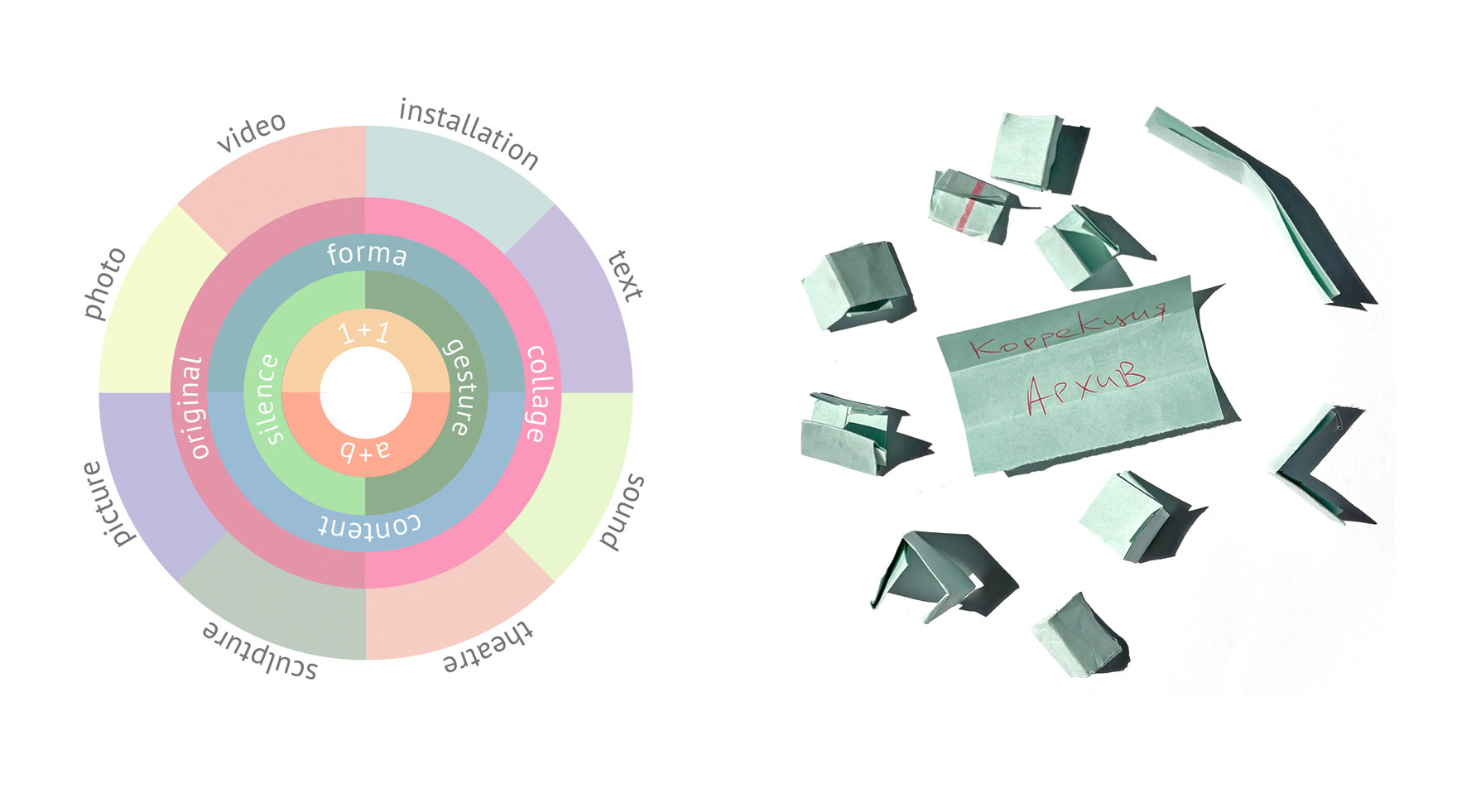
The cover of this zine was sent to the ten artists as an invitation to participate in the translations processes, an invitation to the Translations Room.
Two Denises (Avallon + Berlin) committed to taking one work from each of the 10 participants and translating them into other languages. We immediately gave up the pressure of national languages and came to see translations as a wider and more crucial process. The process was online dialogic the whole time.
[translation] we walked the author’s work through the translations process
{author’s comment} the author did or did not comments on the translations
The whole process of inviting authors to participate, dialogic translations, creating comments, layout, and final reflections on what happened took 4.5 months. Our reflections on the practice of translations are given in text on the last pages of this zine.
- Room for Translations
- منعم رحمه [Abdelmoneim Mohammed Rahamtalla]
- 정화연 [Yuni (Hoa Yun) Chung]
- Andrés Montes Zuluaga
- Алтын Капал(ова) [Altyn Kapal(ova)], Кина Юсуп(ова) [Kina Yusup(ova)], Аида Мусулманкул(ова) [Aida Musulmankul(ova)]
- ანდრო დადიანი [Andro Dadiani]
- Fernanda Aloi
- Elizabeth Clément, Silvia Gigliodoro
- Grace Euna Kim
- HMOT (Stas Shärifulla)
- فّيطل يلع دمحم [Mohamed-Ali Ltaief]
- Room for Translations. Way Out
Many thanks to all participants in this exciting process for their generosity, engagement, insights, and inspirations!
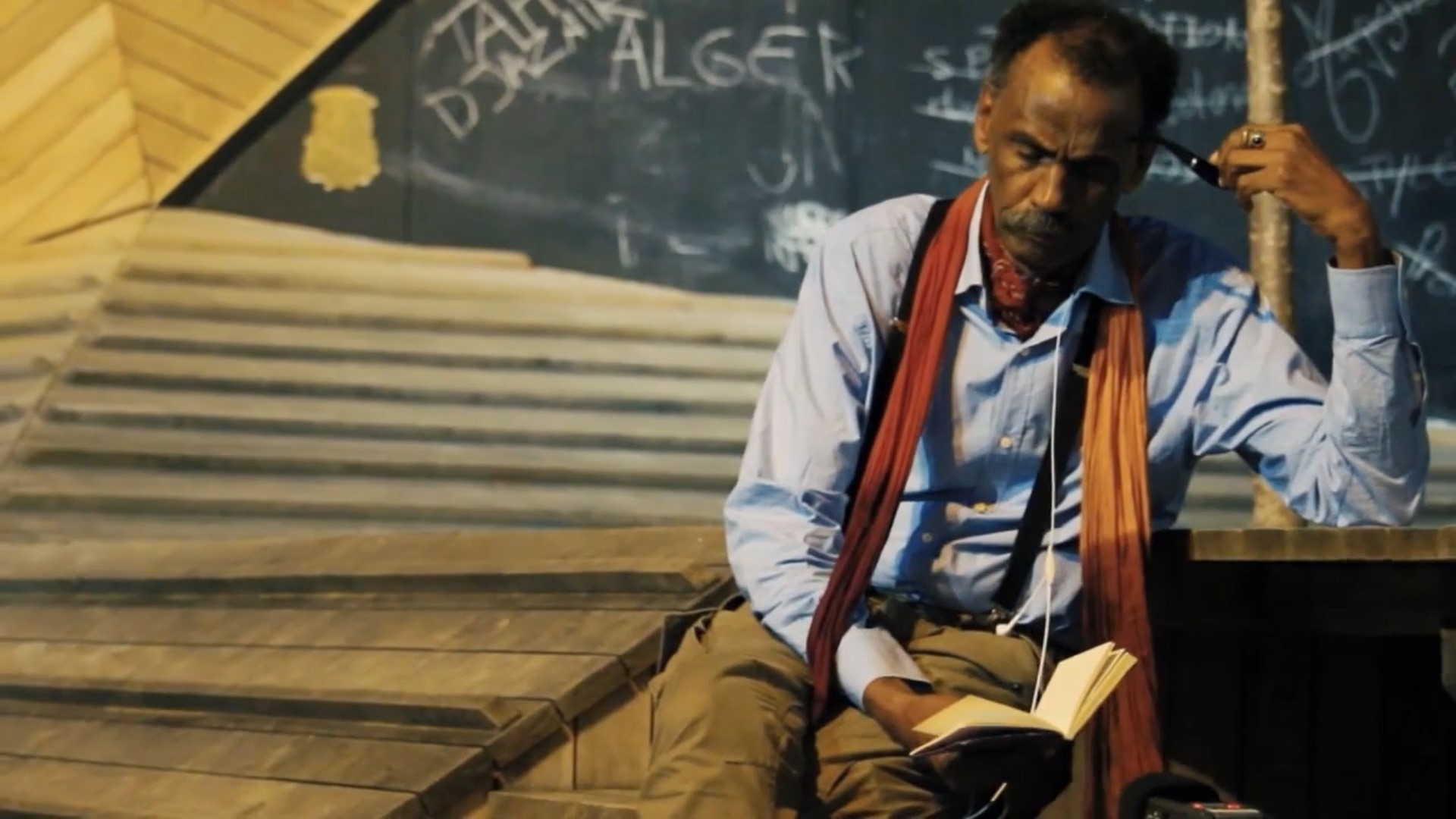
منعم رحمه [Abdelmoneim Mohammed Rahamtalla]

[Colère] بَّضَغ poem & video
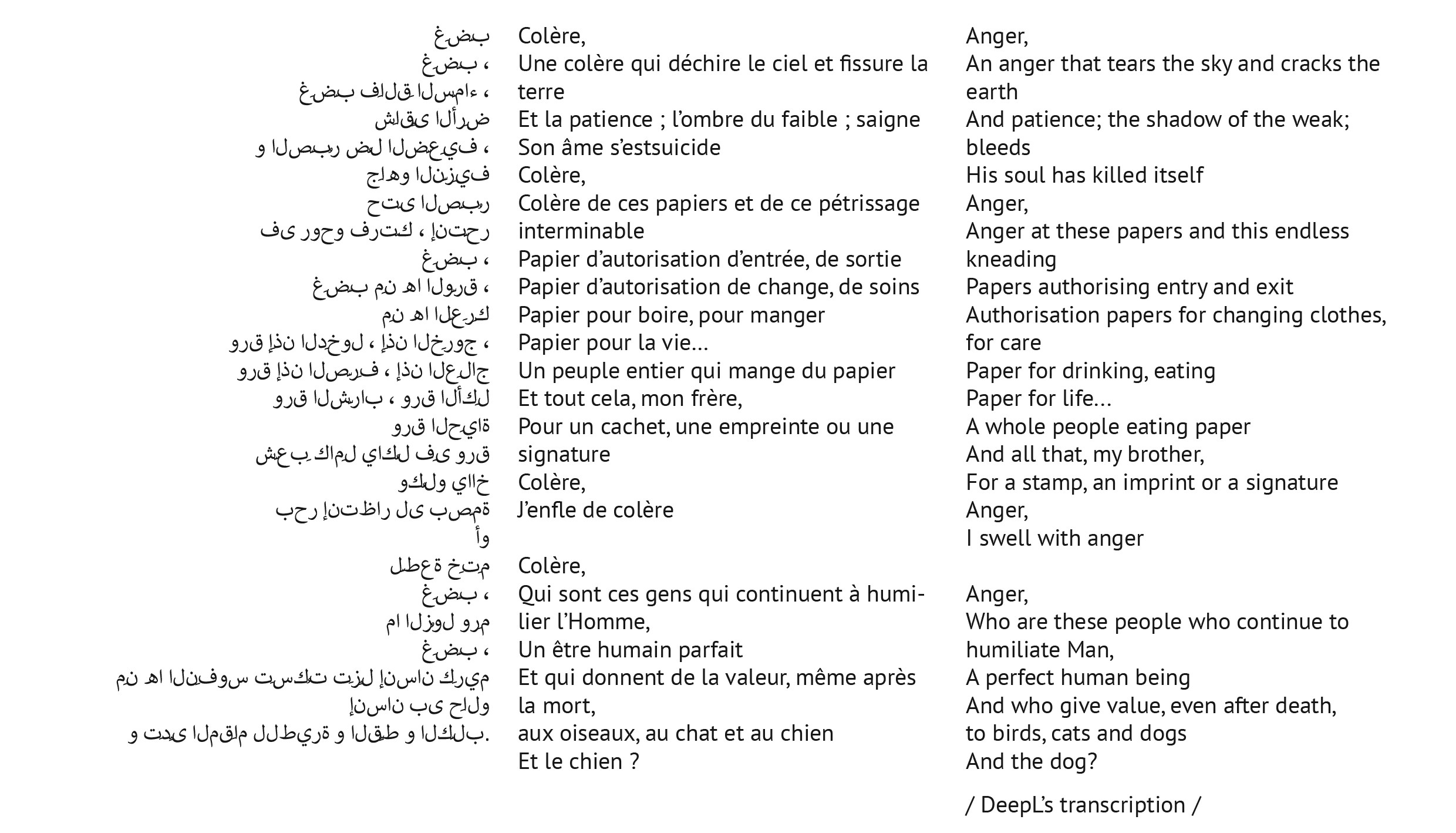
[translations]

{author’s comments}
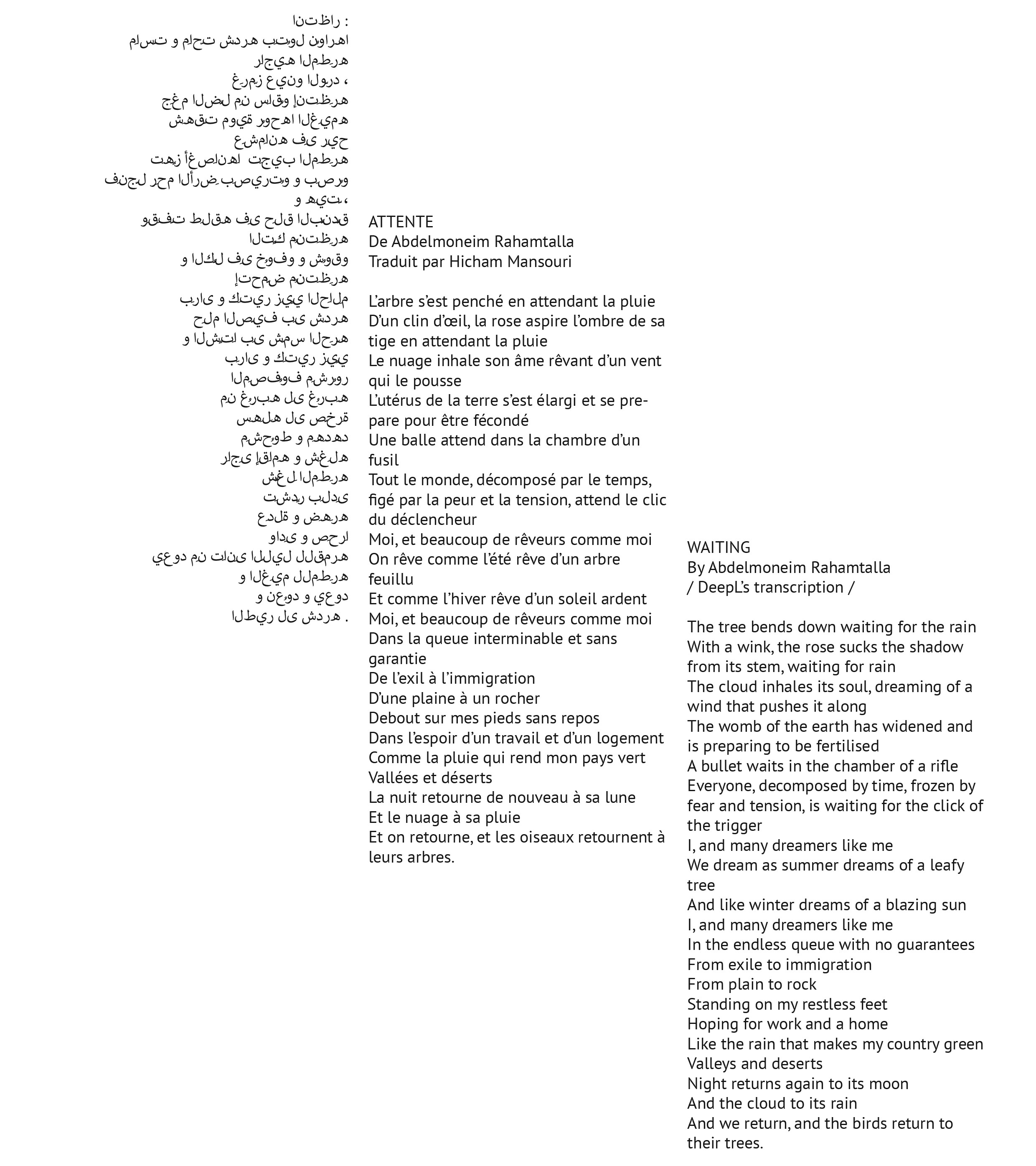
정화연 [Yuni (Hoa Yun) Chung]
욕실 [Bathroom] installation
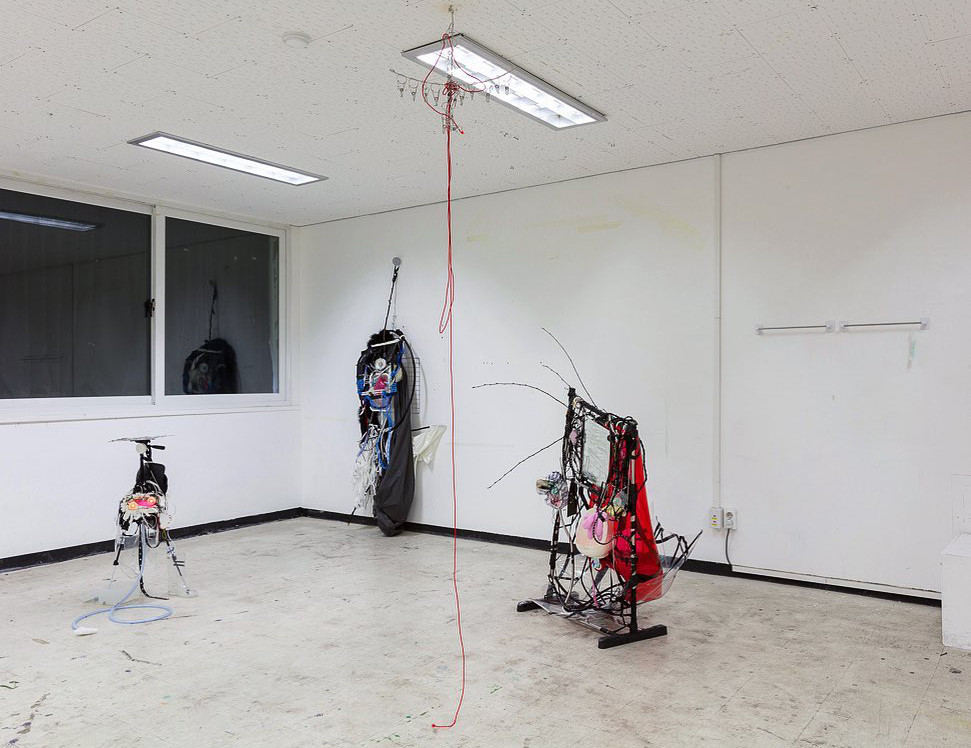

Until the 1990s, bathrooms were not considered as conductive places, nor places of comfort and relaxation. They were places simply designated for “Cleaning” and often included a washing machine, toilet, and sink. Many TV shows and films featured scenes that show the shower at a similar height as the sink, people filling up their washbasins with water to wash their face, and people knocking on the bathroom door to hurry each other to vacate the place. In contrast, the images of bathrooms displayed through media in the recent years are modern, pleasant, refreshing, and closer to a private space. In TV shows, people suffering inner conflicts are often seen organizing their thoughts under pouring water from the shower, and celebrities on reality shows are shown relaxing in their luxurious marble bathtubs. Bathrooms now become a well-designed, everyday spaces of consumption. In the medieval times, water used in purification rituals or baptisms was considered to purify the soul and exorcise evil spirits. It seems that similar rituals are being revived in the modern bathroom. However, are these really purification, or are these hidden rituals well-designed to make people endure the fatigue that lies ahead.
We repeatedly wash away every filth, confusion, and unhealthiness in the bathroom to become a clean self, free from all complications. New products
to maintain cleanliness appear every day. The constantly renewed image of cleanliness open up more options and demands more effort to achieve it. What this multiplicity produces however, is not more satisfaction, but more anxiety. The matter of staying away from impurity, and the constant parting from absolute purity. Images associated with cleanliness are far from the natural state of humans. Researches that show a certain amount of germs and bacteria are in fact good for humans are no longer newsworthy. It is also clear that the production of hygiene products are actually destructing the ecosystem. In this respect, this is the moment when we need a new purpose for cleanliness and bathrooms to facilitate it.
[translations]
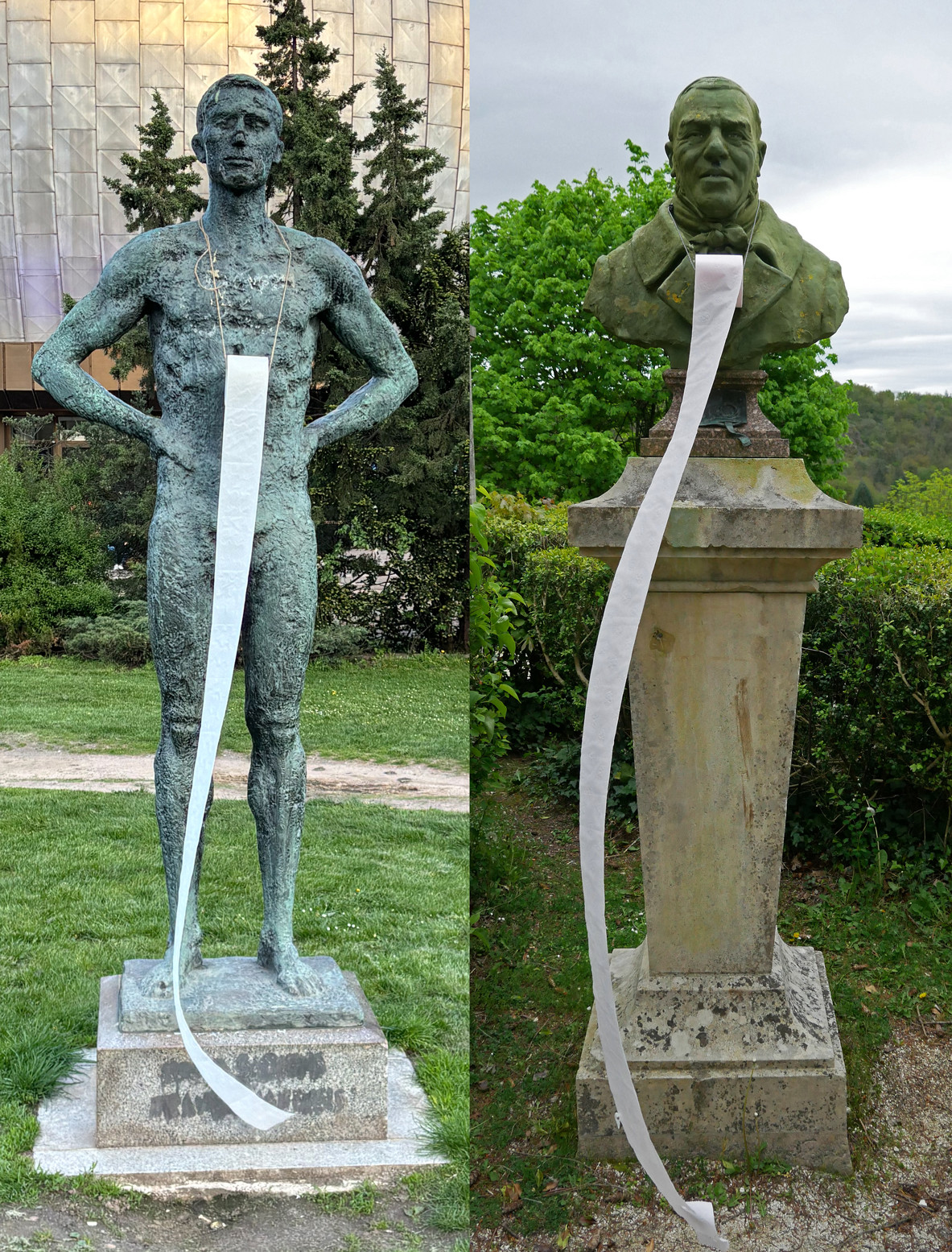
{author’s comments}
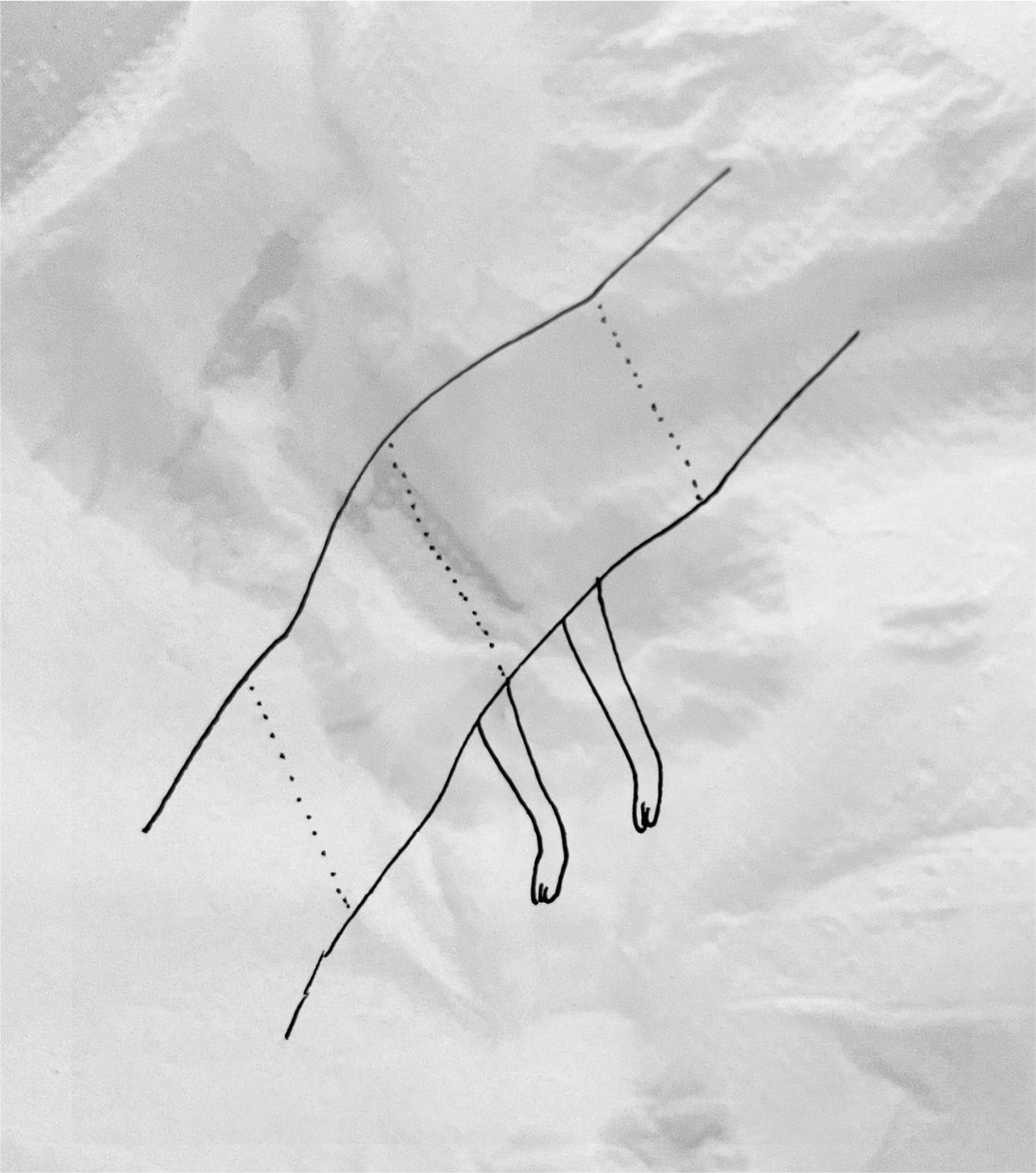
Andrés Montes Zuluaga
Caída [Fall] series of photo actions
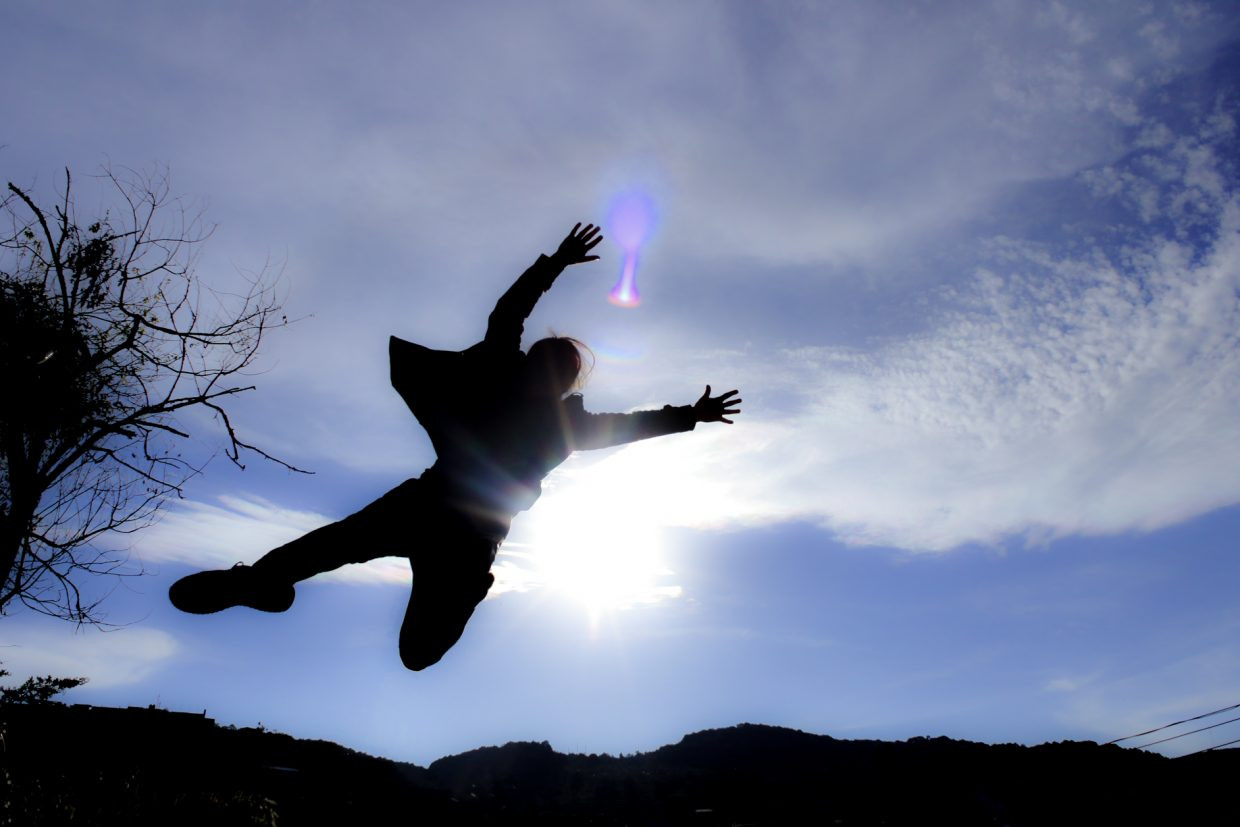
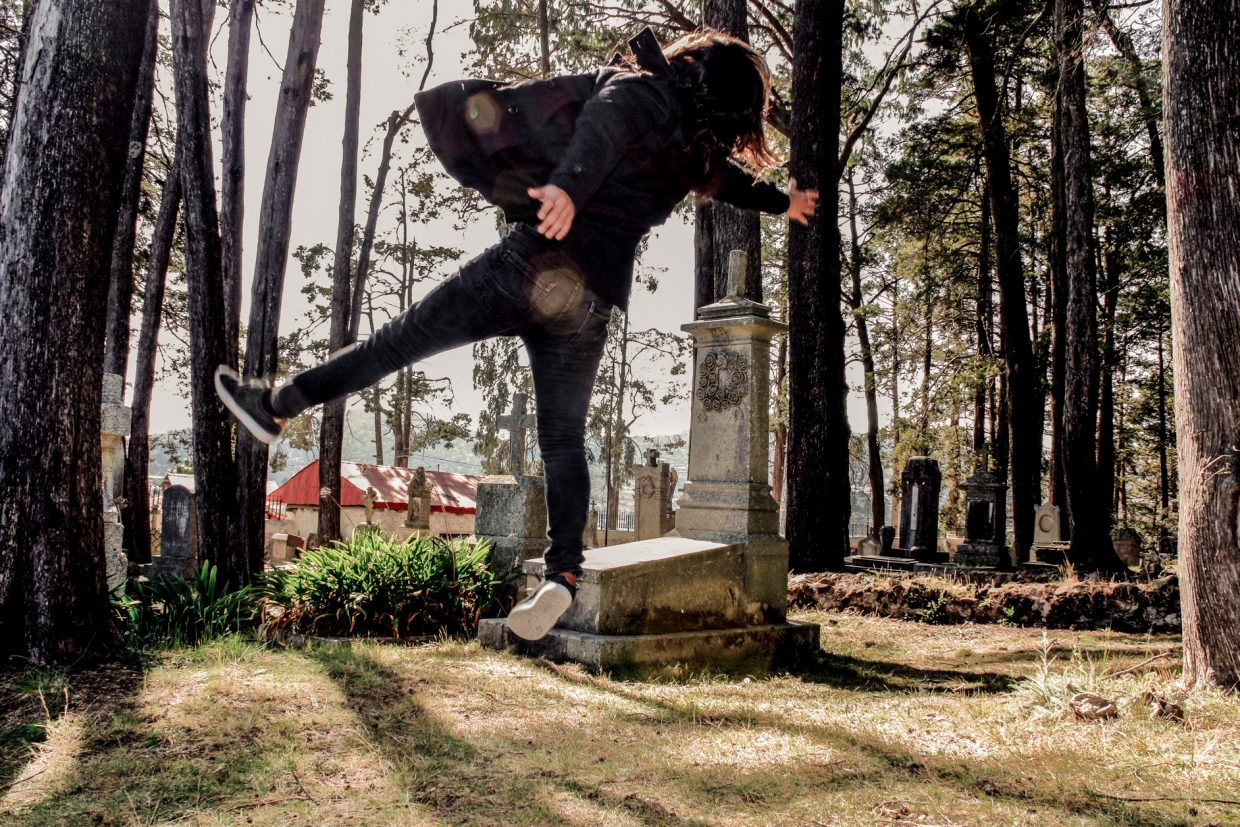
En conmemoración de Ernesto Guisurama Nacabera.
23-03-2020.
Colombia, Valle del Cauca, Bolivar, El Naranjal.
Ernesto fue asesinado el 18 de marzo en el municipio Puerto Santander, Santander.
Guisurama Nacabera pertenecía al pueblo Embera y era uno de los líderes del resguardo del Cañón de Las Garrapatas; él y su familia fueron atacados por dos hombres sin identificar que se movilizaban en una moto y que dispararon contra las personas que se encontraban al interior de la vivienda. En ese atentado, su hermano Omar también perdió la vida y dos familiares resultaron heridos.
Investigación en proceso.
Ofrendo una caída a cada una de las personas que sean asesinadas por haber pertenecido a la extinta guerrilla o por su activismo social en Colombia. ‘Nabba o Las caídas’ es una suspensión en el tiempo de la entrega del peso a la madre tierra, un instante congelado previo a la horizontalidad. Esta vez, ocuparé una fotografía del archivo porque estoy en aislamiento.
Esta vez, caigo en Real del Monte. Acá, en las montañas donde mexicas tomaban los metales preciosos para ofrendar a Huitzilopochtli; encuentre consuelo, compañía y poder Ernesto Guisurama Nacabera para que su voz y su vida resuenen en cada rincón de nuestro ser.
Fecha de la fotografía: 12-01-2020. Lugar: Real del Monte, México. Fotografía: Andrés Montes Zuluaga.
[translations]
Audio files downloaded from freesound.org were used to create the track:
- 233569__nbild__whistle
- 235771__lex777__teakettle_whistle_01
- 607834__department64__whistlingair_humanitone_07
Алтын Капал(ова) [Altyn Kapal (ova)], Кина Юсуп(ова) [Kina Yusup (ova)], Аида Мусулманкул(ова) [Aida Musulmankul (ova)]
Жарылган-Тоо [Zharylgan-Too] sound kinetic installation
![Жарылган-Тоо, sound kinetic installation, Алтын Капал(ова) [Altyn Kapal (ova)], Кина Юсуп(ова) [Kina Yusup (ova)], Аида Мусулманкул(ова) [Aida Musulmankul (ova)]](https://fastly.syg.ma/imgproxy/ephl0SiS9GcXGFx4x3VXXiiXe8pHZwbbWAUp3XohiJI/rs:fit:::0/aHR0cHM6Ly9mYXN0bHkuc3lnLm1hL2F0dGFjaG1lbnRzLzM3NzM1NDIwNGJiMjM1MDk0ZGMxMzYxMTIwYzg4YTc3ZTQ2MTUxMzAvc3RvcmUvZGM2ZjdmMjIwNWFmMzI2NDNjYjVhMGVkM2UzYmFlNTI2YmM1OWIyNWI4OGE0MWY2OWNmMWNlYTQ4NDlhL2ZpbGUuanBlZw)
A memorial installation, a monument to the victims of the Central Asian Revolt that began in 1916 but continued into the 1930s. Үркүн [Urkun].
The place is not accidental. All my childhood I looked at this “Broken Mountain” from the bench near the village house of my grandparents. My grandfather told me that “Zharylgan-Too” was the result of an earthquake in 1911, a small village was left under the collapsed mountain. I thought that this is symbolic and dramatic, because the Kyrgyz forced to flee, died not only from the bullets of the soldiers of the colonizers’ army, they also died because of the most difficult climatic and weather conditions, unable to pass the glaciers and narrow canyons, fell with their cattle into the chasms; where it was very high it was impossible to stop, because there was nothing to breathe, and there was no strength to go, and people just froze in the mountains, leaving children with one piece of bread. And all these stories will be on our site, they are all honest, painful and bitter and very personal. And this is the story of my family too, not someone’s colonial and post-colonial theories.
North shore of Issyk-Kul, turn at the main traffic light in Ananye- vo village towards the mountains.
Accurate geolocation: https://goo.gl/maps/dQByKJRoacV6ZU436
On the memorial tablet, I wrote in Kyrgyz:
In the mountains between Kyrgyzstan and China, the bodies of thousands of people who, persecuted by colonizers, were forced to flee to a foreign country to save their lives and the lives of their loved ones were left behind…
Authors: Altyn Kapalova, Kina Yusupova, Aida Musulmankulova
Architect: Chinara Niyazova
Photographer: Aida Musulmankulova
Sketch Artist: Jum Gunn
Metal specialist: Igor Dzogoev
Installation engineers: Apachi horse, Meder Kubanych, Edik, Adyl, Nurlan, Kubanych, Aida and Altyn.
Art project “16” is supported by the Soros- Kyrgyzstan Foundation
[translations]
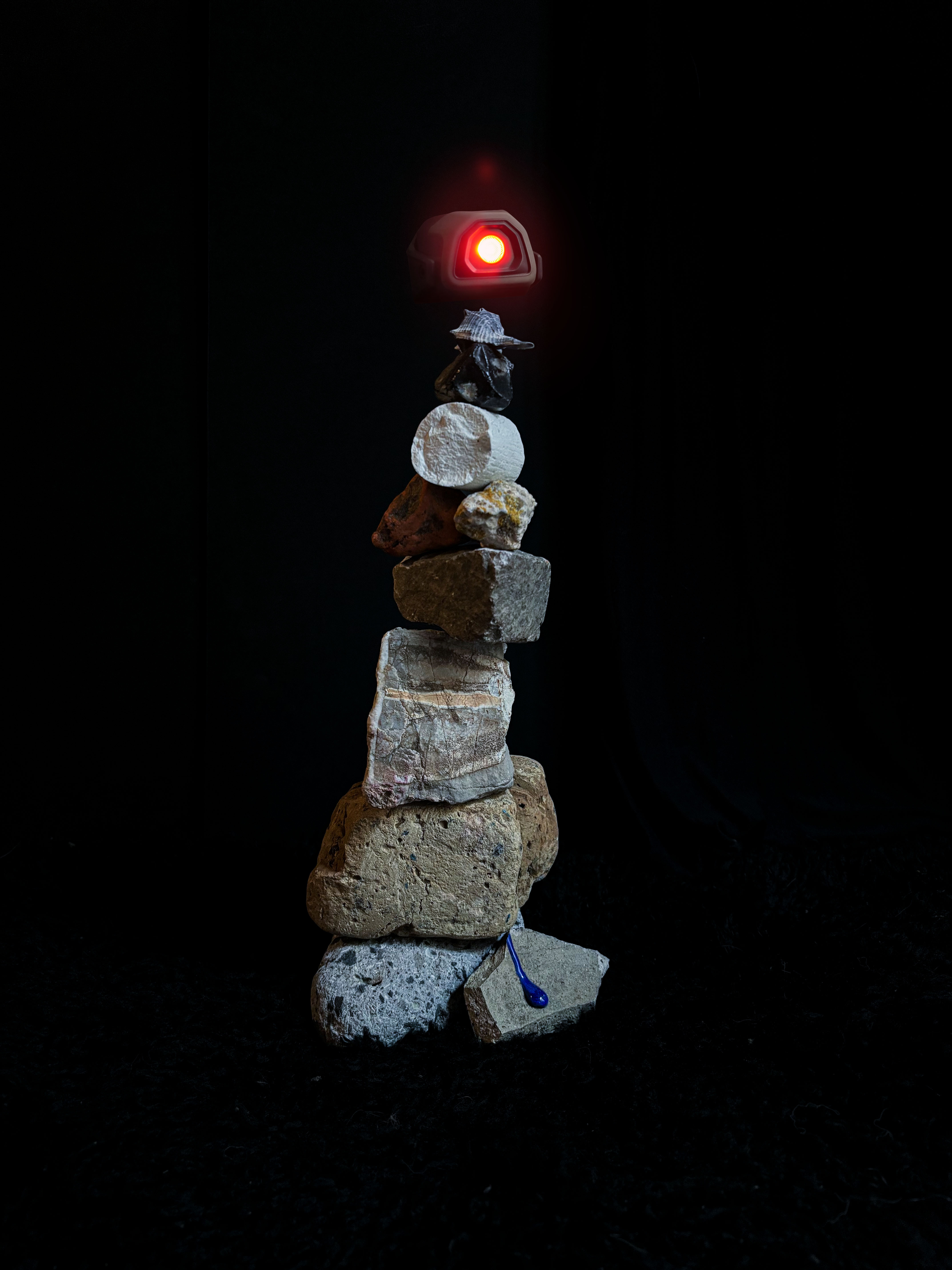
{author’s comments}

Курут — туздуу, кычкыл, даамдуу, катуу, кургак, аппак азык. Аны көпкө сактоого болот. Чөнтөкө салып, куржунга салып, баштыка салып, жоолука ороп, чүпүрөкө ороп алып, алыс сапарга чыкканда жан сактап калчу азыктай сезилет. 1916 жылы орус падышачылыктын куугунтугунун айынан миңдеген журтташтарыбыз Кытайды көздөй алыс сапарга чыгышкан. Ошондо курут бир топ эле адамдын өмүрүн сактап калса керек. Алакандагы алтын азык деп атайт элем курутту
ანდრო დადიანი [Andro Dadiani]
ქვამარილი [Rock salt] performance

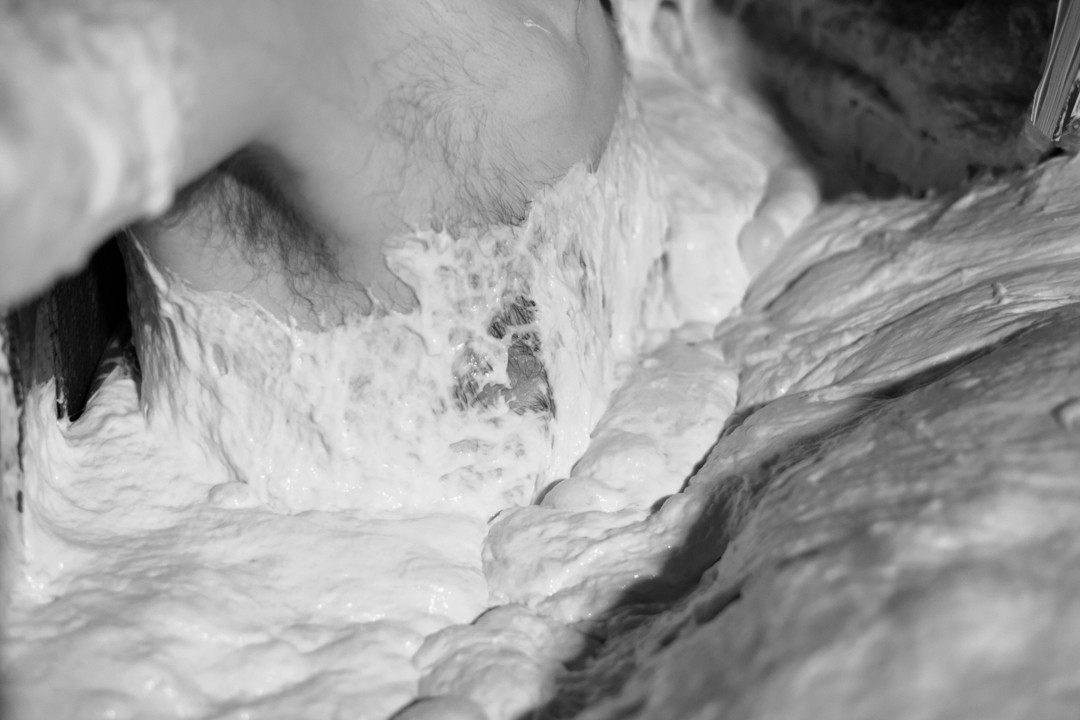
[translations]
Lack of wholeness is one of the attributes of a process. Translation is a process, it cannot be a destination or a result or a capital owner. Therefore, it is fluid and transformative, its course is change. Change of the object or an idea, enabling transformation. Metamorphosis. The production of another object, but in relation to the object of translation.
is | isno | no: the presence of the invisible
In the documentation of Rock Salt performance there isno:
… Salt, Stone, Body, Motion, Death, Bread, Human, Face, Moon, God ….
This list is open, which means unfinished, which means infinite, which means most of it is present invisibly.
The book is not being read, what becomes of the text that is there but not read, that is in the dough? The book is test_ed by crucifixion. What happens to the body inside the bread? Is that body imbued with bread if it is not yet bread? I looked for fresh bread all my childhood and then my youth and found it only in Germany. And all German breads have names. There are many. I can’t not see bread here. You do let yourself in, first you let yourself into the text, then you knead yourself into the dough, and then you become the pastry, the bun, the loaf, the loaf, the pie, ხინკალი [the hinkali].
Bubbles on the surface as a metaphor for the void inside.
How can the invisible be visible? Is there a reason for the existence of the invisible? Is the invisible the hidden? Or does the invisible have no intension, unlike the hidden? Is the invisible cognizable? Why do we need cognition? Might translation be enough?
The act of translating the invisible may also be invisible. But it doesn’t have to be. Presence is not intension.
And the outside of which the mask is the absence of flesh and figure, but the figure melts hidden inside and it is not a figure of speech, not a stylistic device, but what is the point, what is the salt here?
A forbidden identity, an identity for which there is no space. How does one live out such oppressions?
How do we grasp / uncover / feel the presence of the invisible? Presencing invisible.
Translation from the invisible to another language. The language of the readable? The language of argument? The language of gesture? The language of the symbol. The invisible, if it’s being discussed, is already filled with symbols. It’s already within that language.
The salt of the earth, the bread of earth, if you use “god’s eye”, then the moon comes to the fore? I would like god to have no visual media and its eye is only decorative. Just beauty.
The Presencing Invisible could be: heard, felt, touched, smelled, assumed, fantasized, imagined, envisioned, manpulated, pictured, spoken, unspeakable, defined, forbidden, destroyed, favored, inflamed, absorbed, nurtured.
How to salt unsalted salt, how to go from dough to soil? Flour is ashes, bread is a mountain. White to the very last, until it’s really hot. But salt is forever. Overdigest- ed salt translates into kidney stones, at least within the russian language. Is that forever? Salt is like energy? It transforms, it doesn’t disappear? In spring buds open and salt appears on trees, it shines furiously in the sun, burns eyes, dissolves in the rain, salts the earth with its tears.
Crystallized with meaning, but which one? The soil is brown, black, red, like skin colors, the soil is any kind, sometimes salty, but salty soil is a lifeless land. But there is no death here, only buried meaning and maybe someone’s umbilical cord. Тоонто нютаг / Toonto nyutag [buryat. the place where the umbilical cord is buried], this translates into russian as “rodina / homeland”. Motherland whether it’s mother, fatherland whether it’s father. But there’s land and the action. And the translations are not precise and even senseless.
{author’s comments}
For me, the content here is about movement, the meaning of movement.
There are many blind believers in my country, they influence the political agenda. Christ says about the bread, this is my flesh. And this means that if one does not move in Christianity, one is not a creative person, even Christianity, as the most crooked doctrine, can strangle and enslave a person.
This book is by a famous left-wing philosopher, our leftists and intellectuals are not actively involved in politics and we are suffocated by this politics in the country.
Bread is a daily food, not a cake. Therefore, the meaning of this is, how can everyday life attract a person if poetry, music — movement did not mix with life
That’s why this title is called, that such reality is available to us as rock salt animals, for entertainment, as if it’s normal and we should be grateful for it.
Because there is a lot of content in this work, I did not write the concept of who wants to see it. So I like your idea. What you read
This book is called another language, and my language is here another, incomprehensible, unheard, that’s why I hold this book, to try to understand me, to understand, there is no other to hear the truth. Giorgi Maisuradze’s book
Fernanda Aloi
A girl called Terra performance
She was born in a Land called…, what was the name? Some would say her roots were Indigenous, others African, maybe European… Terra had to wear different kinds of masks.
A mask to hide her scars.
A mask to hide her dreams.
A mask to hide her rage.
A mask to hide her silence.
A mask to hide her tiredness. A mask to hide her heart.
A mask to hide her inequality. A mask to hide her desire.
A mask to hide her ruination. A mask to hide her scream.
A mask to hide her mask.
[translations]

{author’s comments}
Elizabeth Clément, Silvia Gigliodoro
F***2017 ou la Grammaire Déprimaire video
«Because education should first and foremost aim at passing on foundational skills and be more open to the world, I propose F2017»
This is an extract from right-wing candidate François Fillon’s program for the French presidential elections 2017. After reading it, came a dream, the starting point of this revisited Anglo-French grammar lesson.
[translations]
{author’s comments}
Sol ou sang. Droit du sol ou droit du sang. Dans une lithanie aux accents fêlés, est-ce finalement la bonne question?
Sol ou sang, soil or blood. Droit du sol or droit du sang. But is this the right question, in a litany with a cracked accent?
Grace Euna Kim
#LanguageShouldBeTorturedToTellTheTruth urban actions
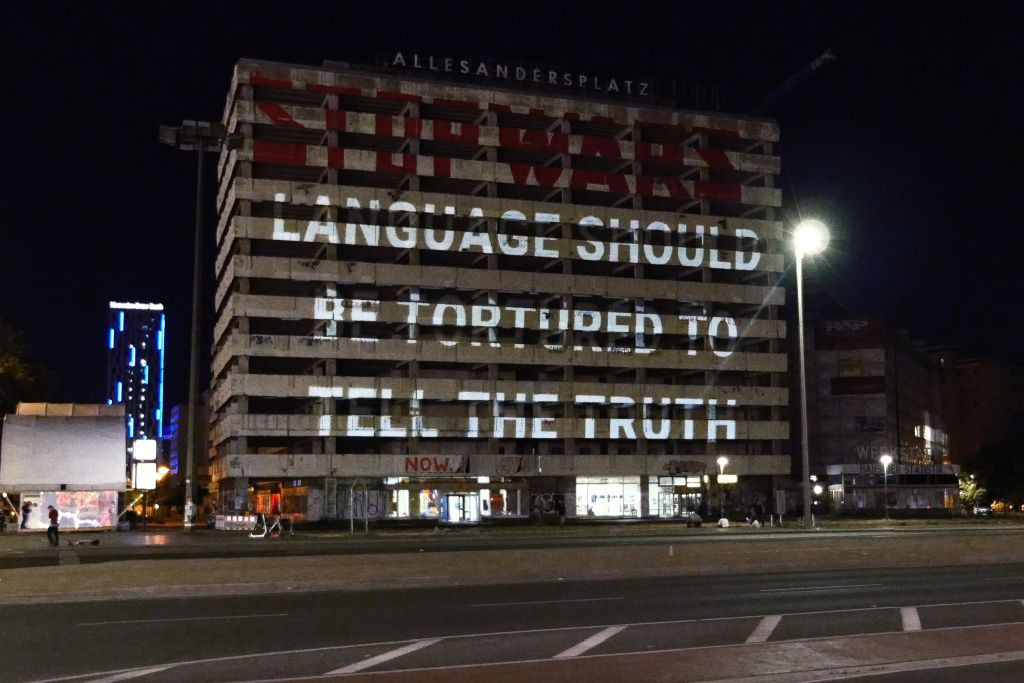

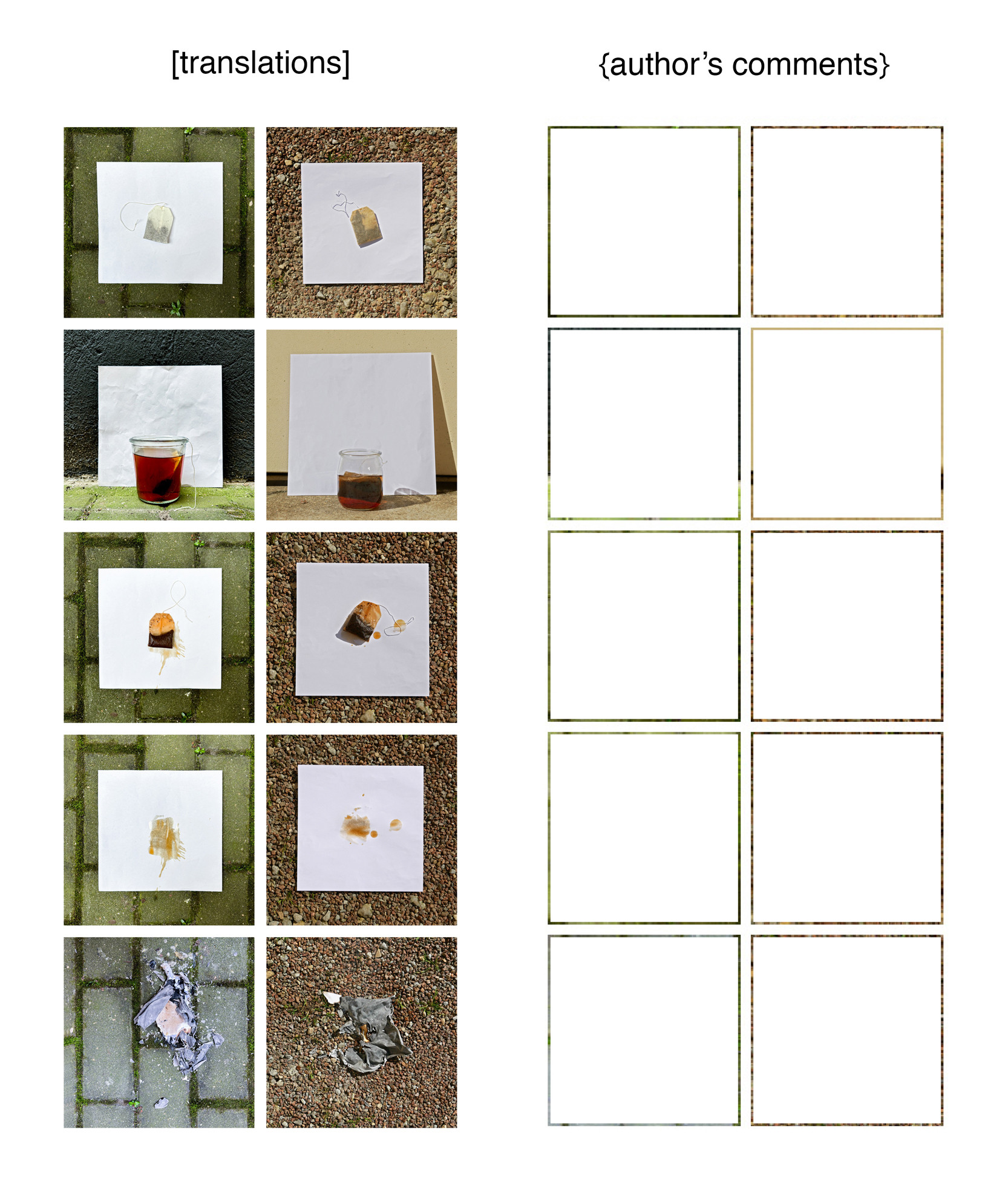
HMOT (Stas Shärifulla)
Ay Qoyaşqa Äylände (Lä) from The Moon Turned Into The Sun music
Ay Qoyaşqa Äylände (Lä) on the artists' Bandcamp page.
New sonic reflections from HMOT (aka Stas Shärifulla) — a Basel-based artist & researcher from Eastern Siberia working with sound & decoloniality, drawing upon his Bashqort roots to envision new liberational futures and methodologies.
Limited Edition Cassette housed in Stumptown 100% post-consumer recycled cardstock packaging. Letterpressed at Rx in Portland, Oregon. Pro-dubbed & on-body printing by Headless Duplicated Tapes in Prague, Czechia. Each copy includes a small print of one of 3 photos taken by Liza Kin at the Tien Shan Astronomical Observatory in southern Qazaqstan. Co-released by Kota Tones & Beacon Sound.
Performed by Stas Shärifulla (synthesizers, resonator, quray).
Recorded by Gerome Gadient at Ausstellungsraum Klingental, Basel as a part of ‘Shapeshifter’ project curated by Ana Jikia and Gerome Gadient.
Graphics and design by Stas Shärifulla and Andrew Neerman.
Mastered by Alexander Pustynsky.
[translations]
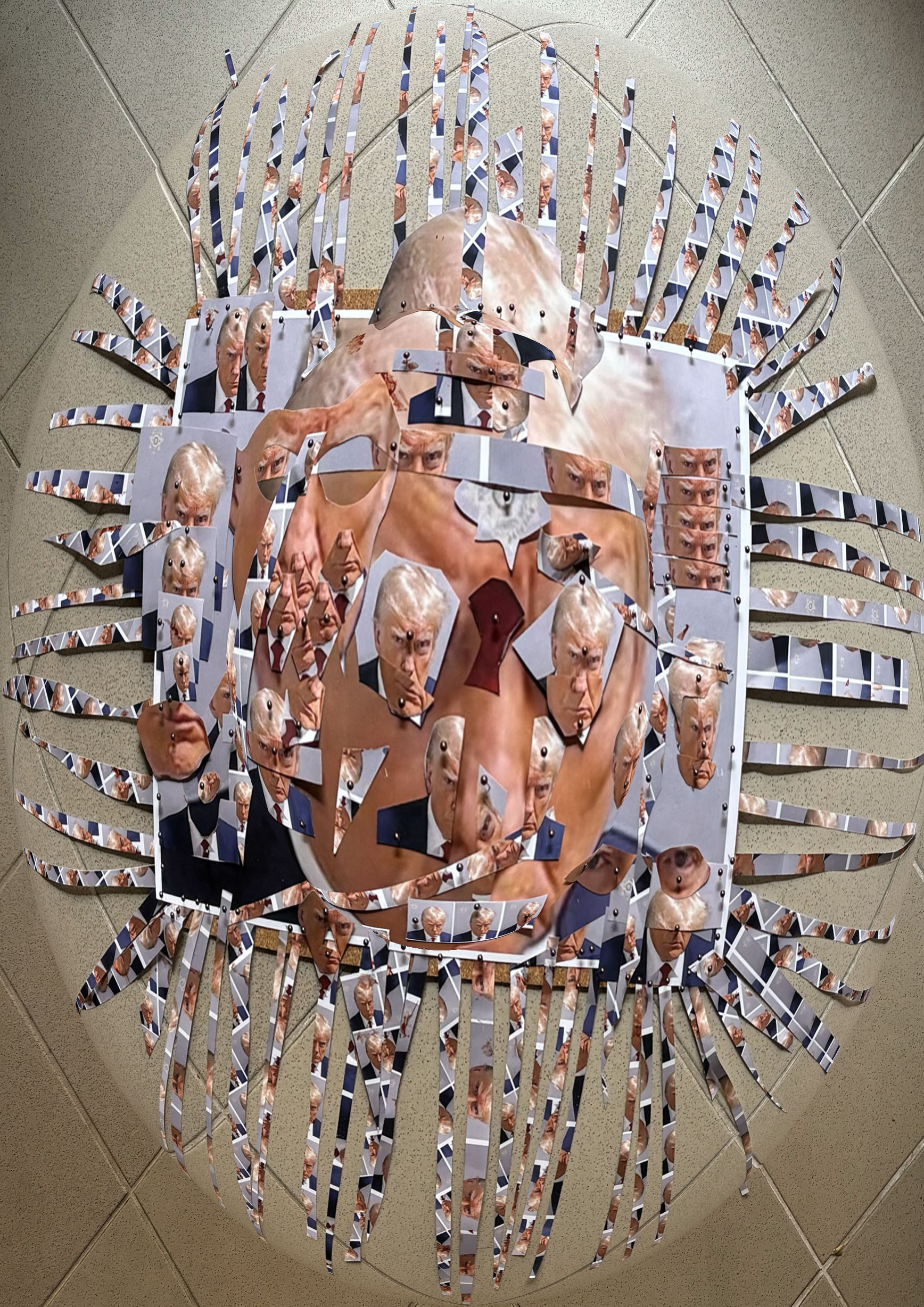
فّيطل يلع دمحم [Mohamed-Ali Ltaief]
طريــــق الشمـــس أو الحياة العارية performance, The Path of the Sun or the Bare Life
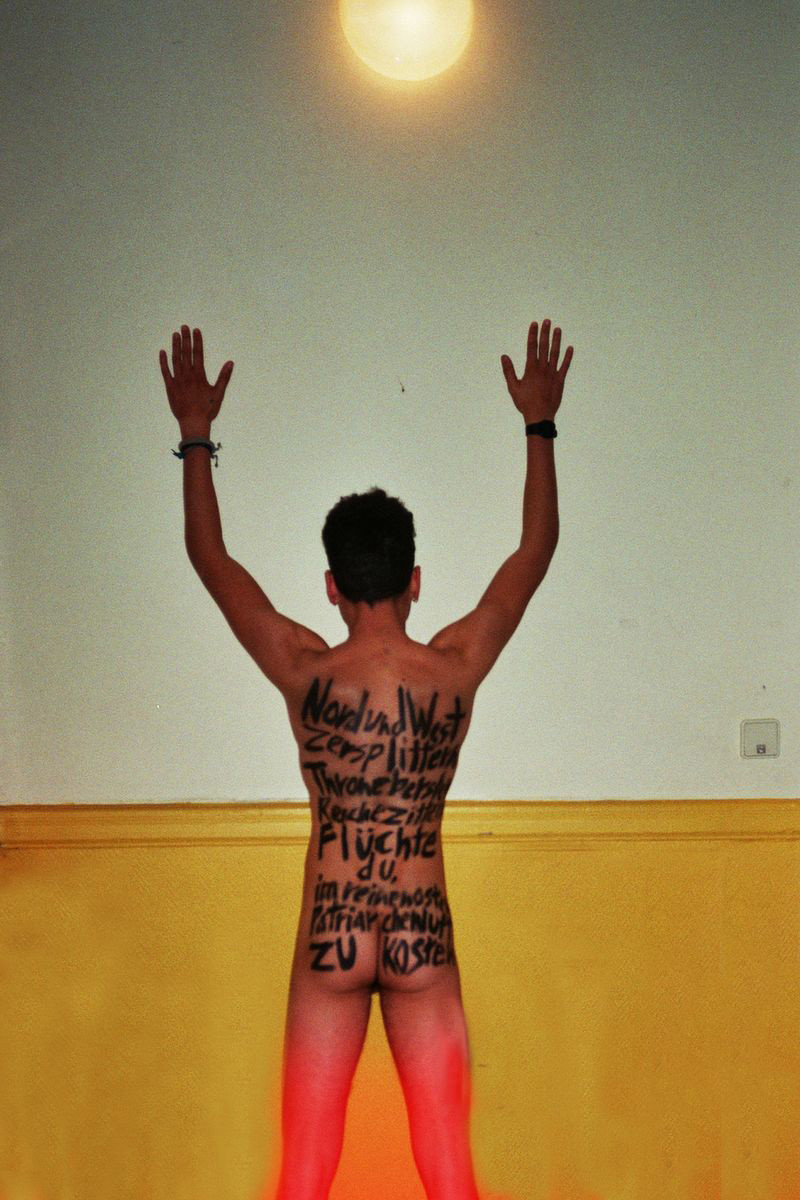
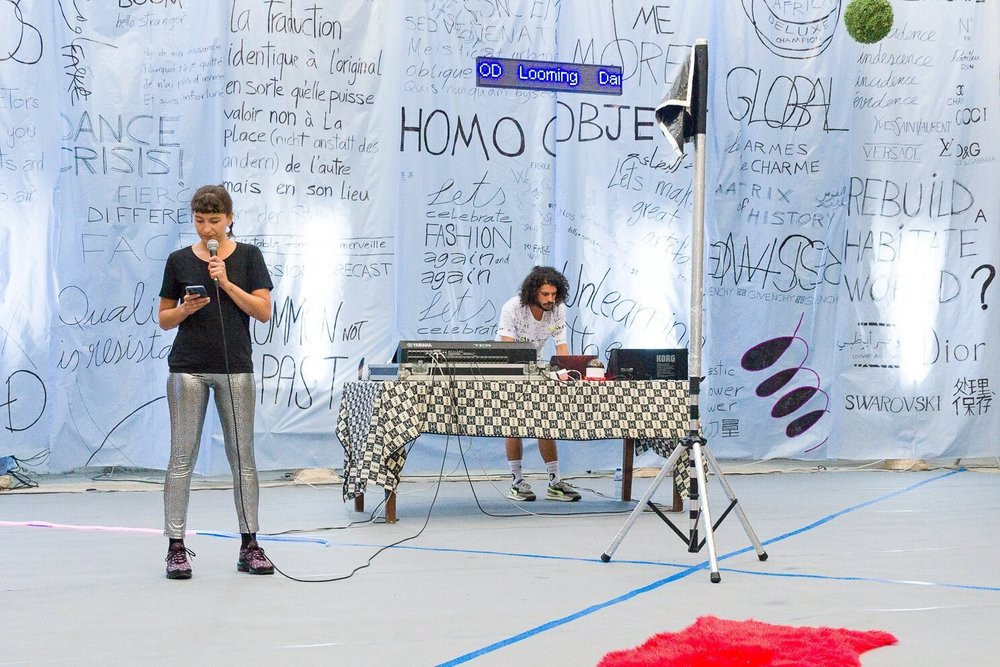
Exile in Arabic is “Eghtirab”, Moghtareb which means, the person who walks towards the sunset Ghouroub. The exile is a utopian counter-place in a whatever diaspora as Michel Foucault says in the Utopia of the Body: «My body is like the city of the sun, it has no place, but it is from itself that emerge and shine all possible places, real ones or topical ones».
The Path of the Sun or the Bare Life is a performative and visual research project inspired by „Sonnenallee“. The street was once a part of “Berliner Mauer” and eventually became the meeting point for the “Arab diaspora”. Crossing Berlin-Neukölln, separating North and South, „Sonnenallee“ brings together cafés, popular restaurants, and shops, distinguished by oriental/orientalist aesthetics. The visual approach is to collect and recompose the exotic, kitsch, and foreigner allegory and signs: in the showcases, in the fantastic products, and in the delights of the Orient. To understand the peculiar, and petulant aesthetic of the street of “Sonnenallee” that developed in the spatial habitus of the Arab diaspora; we must understand how the phenomenological process of remembering and forgetting in its spatial resonances. To unravel and decipher the codes of Self-Orientalism we need first an aesthetic recontextualisation.
The work on which the research is based is “Homo Sacer” by Giorgio Agamben. Homosacer in ancient Roman law, is the one who is excluded from civil society, and stripped from juridical rights. He is not worth enough to be sacrificed to the gods but whoever kills him will not be condemned. The life that cannot be sacrificed (because it is not valuable enough), but which is, nevertheless, exposed to naked murder, is the « holy life ». Anyone who has been declared a «Homo Sacer» can only save himself by fleeing, seeking refuge in a foreign country, for he is exposed at any moment to the threat of murder. He is constantly concerning the biopolitics that has banished him. The living Homo Sacer is both excluded and trapped, he is a freedman and a prisoner.
Mohamed-Ali conducted research during his residency in Tunis on the market of Chinese products: the Boumendil market in the Medina of Tunis. In particular, he investigates the impact of the Chinese market on Sidi-Boumendi street history of the present and explores with Omar Karray their particular soundscape.
Madrasa El Achouria. Medina of Tunis, Tunisia. 2021
with Omar Karray and Rindala Pereverzev video: Imed Aouadi
sound: Omar Karray
video performance: Slim Baccar
voices: Marina Resende Santos, Ayed Fadhel,
Rindala Pereverzev and Mohamedali Ltaief.
Production of L’Art Rue Tunis
Dream City Residency supported by Goethe-Institut Tunis and AFAC Beirut Research grants in the field of performing arts/dance 2019 Senate Berlin.
[translations]
Room for Translations. Way Out
Denis
Accessibility. Translation. Transfer. Pause to listen. Where I am. Where Denises are. Who’s Dëni. Why Denise.
Time is labor.
Labor means ТРУд in russian.
ТРУдное time means hard times.
ТРУ one can read as TRUE.

Yesterday the polizeis brutaly broke up the protest camp at the university.
Now FREE University Berlin is a polizei campus. What time is this? What is true? From what language was translated the polizei labor to the language of the polizei forced brutal actions against students in their campus? And why was it translated into the language of violence? And why was the translation assigned to polizeis? Who else could have been the translator in this process? Since we are in such conditions now, it is worth discussing Islamophobia in this context as well. If Islamophobia is how non-Muslims translating the Other’s customs, traditions, skin color, culture into their own languages, then what languages are these? Another culture, another faith? Or maybe it’s the language of power? Or is it a translation into the languages of domination and capital? And the peculiarities of translation are just a consequence of protectionism of one’s privileges? Monolingualism is the cult of the people in power. It turns out that those in power have heard the philosophers, followed the advice of the ancient Greek Plato, keep philosophers and the army (both military and civil), so that the language spoken by us was just one. Just Mono. So resistance must be plurilingual. Poetry about anger could be spoken in a calm voice and be translated into many languages, one of which would be the bureaucrat’s crumpled sheet.
Translation is not a direct act, but an act of interaction-interchange in which languages knowledges are tools. And sometimes it is an unnecessary tool. Relations between the translator and the subject of translation are polilogical. It is an interchange. Translations are a collaborations. And if the author’s voice is louder than the subjectivity of the translator, then this labor is done by a machine. The translator’s self is an area of feeling and interaction by the subject of translation. There are at least two voices, and within this zine there are at least three and sometimes four. Polyvoiceness.
The cultural habitus of monolingual space has led the Russian empire to violence on an extraordinary scale, both internally and externally. The monolingual habitus of the local residents of the average Germany leads it to negative feelings and cognitive distortions about migrants. These are in worlds where migrants are one of the most common identities. In Berlin, you might not be contracted to shoot photos if you don’t speak German. Should I learn deutsch photography to be able to take pictures for germans in deutsch way? And this is also a translation. A translation of fear of changes into the language of control and supremacy. Or perhaps it is a counter-Translation, because its aim is not to make something accessible but to limit something beyond the boundaries of monoculture, monolanguage, capital and privileges.
Room for Translation is an action to create a space in which not knowing and not understanding are natural. In this space, there is curiosity and tools to encounter the unknown and notunderstandingness. The translation of stone to курут*, to food, would not fit in any dictionary. This interchange occurs at the level of relations — translator to the author, work to languages, desire to constraints, curiosities to conversations — and in this rhizome, all are simultaneously connected to each other. Pluriversalities.
*
kashk
persian: کشک Kašk
turkish: keş
qurut
tuvan and kyrgyz: курут
kazakh: құрт
turkmen: gurt
uzbek: qurt
azerbaijani: qurut
pashto: قروت
turkish: kurut
chortan
armenian: չորթան [chort’an]
mongolian: ааруул [aaruul] or хурууд [khuruud]
*
What is the order of this chaos of Translation? If we take the word “order” out of this question, what emerges is a Chaos of Translation — an intention of connection and interchange organized in a complex and generous and harmonious way. Chaotic. In other words, without the necessity of excessive control, because it is naturally harmonious, it just exists.
The English word “translation” comes from the Latin:
"translatus" — “carried over”.
trans “across, beyond” + lātus “borne, carried.”
To carry over. To carry with one’s self. Accepting the conditions of fragmentation of self, consciousness, perceptions, worlds, translations, we can agree that it is not possible to carry-over-with oneself everything. The Coyolxauhqui imperative (Anzaldúa) — fragmented, dismantled, displaced, but whole. Therefore, the translation will only carry-over-with the part that resonates with me, the translator. The part that the languages I am using have made visible to me. And the processes of translation produce a chimera-going-beyond the limits of the monolingual. Translation is already a counteraction to the dominance of monolanguage. It turns out that translation is the carrying of an assumed meaning into the field of the Other with the consent to the distortion of what is carried. Even if it is soil sown into tall grass. Despite the sometimes absurdity of the gesture, it is still fertile and fruitful.
если не займёшься собой, то собо займется тобой
if you don’t take care of yourself, yOURself will take care of you
[self-translations]

Dёni
What is the point of this exercise? Maybe the main motive
or even the urge of this action is the need to shift, to start a motion, to push oneself out of place towards a new place, out of occupied place, displacement, to establish oneself on new bases, to create these bases within oneself, through reproducing one-self with the other, through looking into the other and finding a balance between the established and the unestablished, through carrying the body’s weight by keeping thought, through translating the flow of experience into the language of one’s own life. In this duration meaning is found.
[self-translations]
